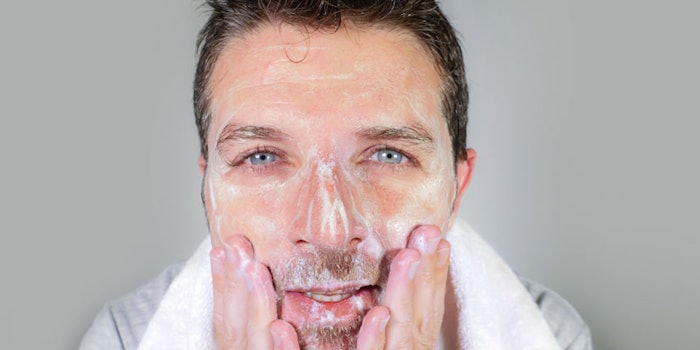
We're all doing it. Lathering, rinsing and repeating ourselves to better hygiene in the face of the pandemic.
As C&T has previously reported, these hyper-hygienic activities, while crucial to maintaining health, have repercussions for our skin, which is why it is important to develop mild yet effective cleansing products. In relation, we offer the following brief literature review presenting recent work to quantify and improve the mildness of cleansers.
See related: A Delicate Dance, Mildness and Efficacy to Cleanse Compromised Skin
Ectoine to Decrease Surfactant Irritation Potential
Bujak, T., Zagórska-Dziok, M. and Nizioł-Łukaszewska, Z.; Molecules; https://doi.org/10.3390/molecules25061433
Cleansing products can cause irritation and disturb the hydrolipidic skin barrier, which is especially concerning for atopic skin. This paper examined the effects of ectoine on the irritation caused by four anionic surfactants. The addition of ectoine to the solutions improved their safety by ~20% and decreased their ability to solubilize model sebum by approximately 10-20%.
Excessive Cleansing and Incidence of Rosacea in China
Li, G., Wang, B., Shi, W., Jian, D., Xie, H., Huang, Y. and Li, J.; Arch Dermatolog Res; available at: https://link.springer.com/article/10.1007/s00403-020-02095-w
This research explored whether cleansing habits would influence the onset and progression of rosacea. Data analyzed from 999 rosacea cases and 1,010 health controls in China revealed an overall high frequency of cleansing, i.e., more than once daily, plus the large amount of cleansers used (more than 5 products per year) was positively correlated with rosacea. Additional risk factors included tool use, oil control, exfoliation, facial masks and more.
Measuring Cleansing-induced Changes in Skin
Davies, M.; Skin Res & Tech; https://doi.org/10.1111/srt.12760
This work utilized confocal Raman spectroscopy to study the effects of hand-washing on product deposition, lipid acyl chain structural disordering, skin hydration and NMF extracts including cholesterol, ceramides, amino acids and skin hydration. Results showed significant decreases in cholesterol, ceramide and keratin, in particular. NMF levels were not changed, however, and skin dehydration occurred without lasting changes in lipid acyl chain confirmation. Additional details are outlined in the article. The study suggests the negative effects of frequent washing could be reduced with lower wash temperatures and products.
Quantifying Cleanser Mildness
Perticaroli, S., Meyers, J.L., ...Ray, PJ., et al.; Journal of Raman Spectroscopy; available at https://doi.org/10.1002/jrs.5841
According to these authors, current clinical methods to assess the mildness of skin cleansers are based on exaggerated conditions that do not align with in situ reality; i.e., the brief contact time of cleansers with skin. This work describes a method to account for this, which is based upon in vivo confocal Raman spectroscopy and small‐angle X‐ray scattering (SAXS). The approach said to quantitatively measure the changes in composition, water uptake and spacing of lipid lamellar structures in skin after a single ~2 min wash protocol.
'Clean' Cleanser with Reduced Ingredients
US Patent 20200046623A1; assigned to Procter & Gamble; available at https://patents.google.com/patent/US20200046623A1/en; accessed on Sept. 16, 2020
This P&G invention relates to a rinse-off cleansing composition based on an alkyl polyglycoside and an acyl glutamate. According to the disclosure, these inventors discovered unexpectedly that this combination, at specific total levels in specific weight ratios, is both mild on the skin and/or eyes and stable at acidic pH conditions. It also delivers good sensory performance and supports formulas with fewer ingredients, aligning with today's "clean" beauty movement.
See related: Designing Mild Personal Care Products, A Case Study









